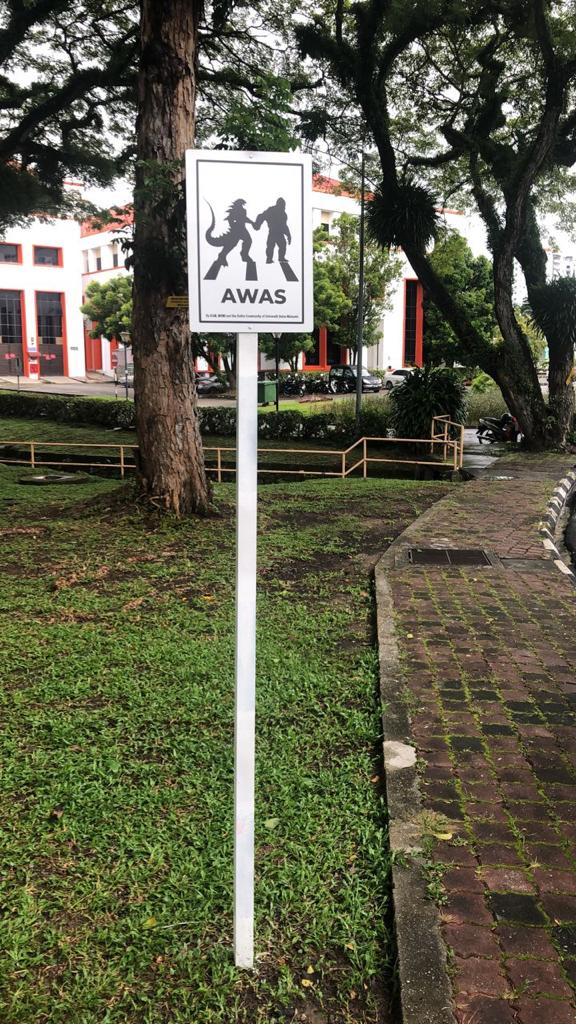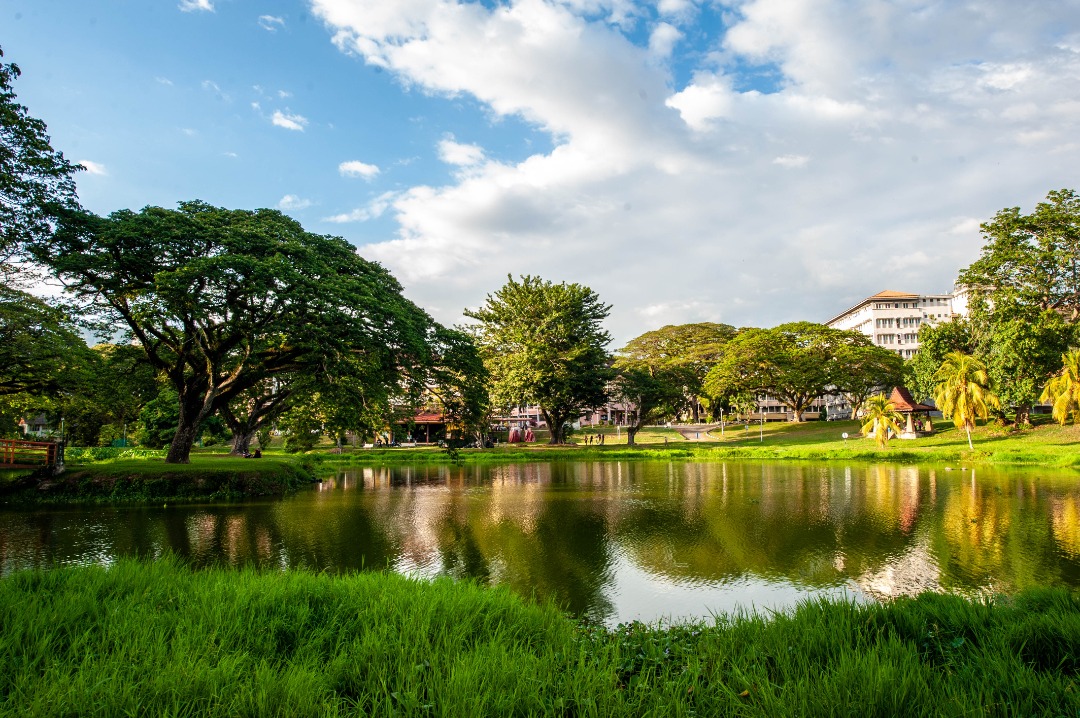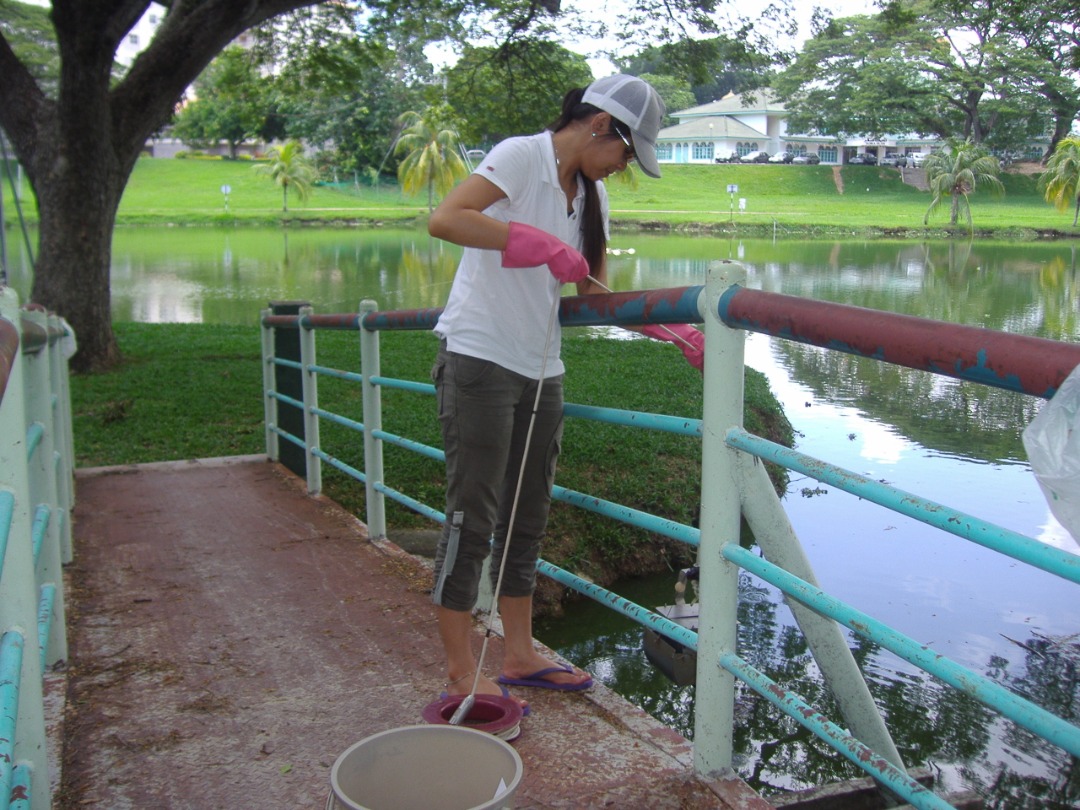TASIK HARAPAN, A SITE FOR MODELLING OF BIOLOGICAL BEHAVIOUR
USM PENANG, 14 October 2021 -- A mind filled with creativity and imagination can produce countless ‘wonders’ which can be appreciated or pondered upon.
Take for instance, the site where Universiti Sains Malaysia (USM) is located now.
Though not a nuclear test site, it used to belong to the British Army during mankind’s last global war. It has since become a ‘battlefield’ in seeking excellence as one of the nation’s prominent research universities.
Don’t be surprised (and therefore no need to ask why) if you see road signs with Godzilla and Kong hand-in-hand crossing the road as you come into the campus grounds.

It’s part of the ‘imaginary/imaginative ‘atmosphere’ in USM that we hope more people will embrace as the COVID-19 restriction MCO (Movement Control Order) has been withdrawn and we (and our minds) are free to roam again.
One of the more prominent features of the university is ‘Tasik Harapan’, a lake located close to the campus mosque fronting the side entrance. It’s a favourite spot for the campus citizens to keep fit amidst nature.

No Godzilla or any other underwater creature has been seen here, save for the resident monitor lizards or ‘Goji’, at times seen in the university Facebook postings, highlighted along with other parts of the natural landscape of the ‘university in a garden’.
Recently however, academicians from the USM School of Mathematical Sciences (located within the vicinity of the lake) have shared some of their work regarding the lake and its condition.
Associate Professor Dr. Teh Su Yean, Dr. Mohd Hafiz Mohd, Dr. Tay Chai Jian and Professor Dr. Koh Hock Lye (from Sunway University, formerly from USM) have been doing mathematical modelling research work in biological fields such as COVID-19, epidemiology and ecology, to name a few.
Hafiz said, more research from the mathematical modelling fields can be done on the aspect of biodiversity in this university. One example will be on the Goji’s habitat i.e., ‘Tasik Harapan’ USM, which has been their living place for a long time.
“It has been reported by some studies that the algal concentration in ‘Tasik Harapan’ may reach 300 μg/L. This result implies a highly eutrophic condition and some steps to remedy this problem should be taken,” Hafiz said. **Eutrophication: excessive richness of nutrients in a lake or other body of water, frequently due to run-off from the land, which causes a dense growth of plant life.
In order to address some of these issues, this team has employed mathematical modelling and dynamical systems techniques to examine the algae-phosphorus interactions and its combined influences with distinct biological factors in mediating eutrophication dynamics in Tasik Harapan.

Their work has recently been published in the Journal of Theoretical Biology (Q2 with IF 2.691) and the paper can be found below:
Overall, the modelling work suggests that a combination of external phosphorus loading, algal mortality,and internal phosphorus recycling rates play an important role in the eutrophication process which occurred within the lake, particularly in a shallow tropical lake like ‘Tasik Harapan’.
Therefore, Su Yean explained, to facilitate the restoration process of ‘Tasik Harapan’ in the future, methods to reduce internal phosphorus recycling such as sediment dredging and flushing are recommended, in conjunction with the control of external phosphorus loading.
”Research work such as this will surely highlight USM’s role as one of the top universities in relation to the world sustainability rankings.
“At the same time, it can also demonstrate the efforts done by USM in the preservation of nature and its green areas, which are integral in spurring the university’s development of the intellect, and thus enhancing the spirit and practice of nature conservation,” she added.
Yes, Godzilla exists only on the silver screen, the product of a fertile imagination.
However, the ‘Goji’ that we can see around ‘Tasik Harapan’ can definitely serve as an impetus in developing research ideas through creativity, in understanding more about our surroundings and what we can do to improve its existence.
Let’s take the lead.
Text: Mazlan Hanafi Basharudin/Source: Dr. Mohd Hafiz Mohd & researchers from School of Mathematical Sciences, USM/Photo: Ebrahim Abdul Manan & Dr. Mohd Hafiz Mohd
- Created on .
- Hits: 3337
